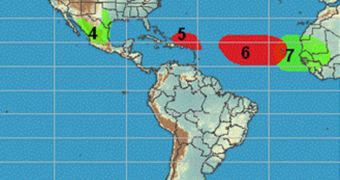Since the earliest days of agriculture, people have been trying to develop ways of figuring out when it was going to rain, and when the first snow would fall. Weather prediction is now a tricky business, but researchers want to make it more reliable.
At this point, predictions can only be made for a few days in advance, which is not necessarily so useful for farmers or government officials.
Those in charge of managing Earth's precious water and energy resources could also benefit from the advantages brought by knowing how weather patterns will evolved over weeks, months, or years.
This is naturally possible, experts say, but not with existing technologies. While accurate short-term climate forecasts are already possible, long-term ones still aren't.
One of the main reasons why this is currently impossible is the fact that the Earth's ocean, atmosphere and land surface interact with too great a variability.
Not even the most complex computer models, from which weather forecasts are derived, can account for the vast number of possibilities that exist in such a dynamic system over long time frames.
From a certain point onwards, the sheer number of possibilities becomes overwhelming and too computationally intensive for even the most powerful supercomputer.
Analyzing the current state of this research field is a report that was recently released by the US National Academy of Sciences.
One of the most important sections of the document centered on recommending strategies and practices aimed at improving prediction capabilities.
The research was performed by a panel of 12 researchers, at the request of the US National Oceanic and Atmospheric Administration (NOAA).
Chief Earth scientist Duane Waliser, who is based in Pasadena, California, at the NASA Jet Propulsion Laboratory (JPL) was one of the members in the panel.
“This new report highlights the key shortcomings and strategies needed to make more accurate climate forecasts – not just of the Madden-Julian Oscillation, but of intraseasonal to interannual climate forecasts in general,” the expert says.
The Oscillation is a phenomenon that exerts a powerful influence on short-term climate predictions, the researcher goes on to say.
“Ten years ago, our ability to forecast Madden-Julian Oscillation events was very limited,” Waliser says.
“Today, numerous operational forecast centers around the world are recognizing the importance of forecasting the MJO and are beginning to provide useful forecast information about it,” he adds.
“This information, in turn, can be used to make better forecasts of other weather and climate phenomena,” the JPL expert concludes.
The new report, which is entitled “Assessment of Intraseasonal to Interannual Climate Prediction and Predictability,” can be obtained from the NAS website.

 14 DAY TRIAL //
14 DAY TRIAL //